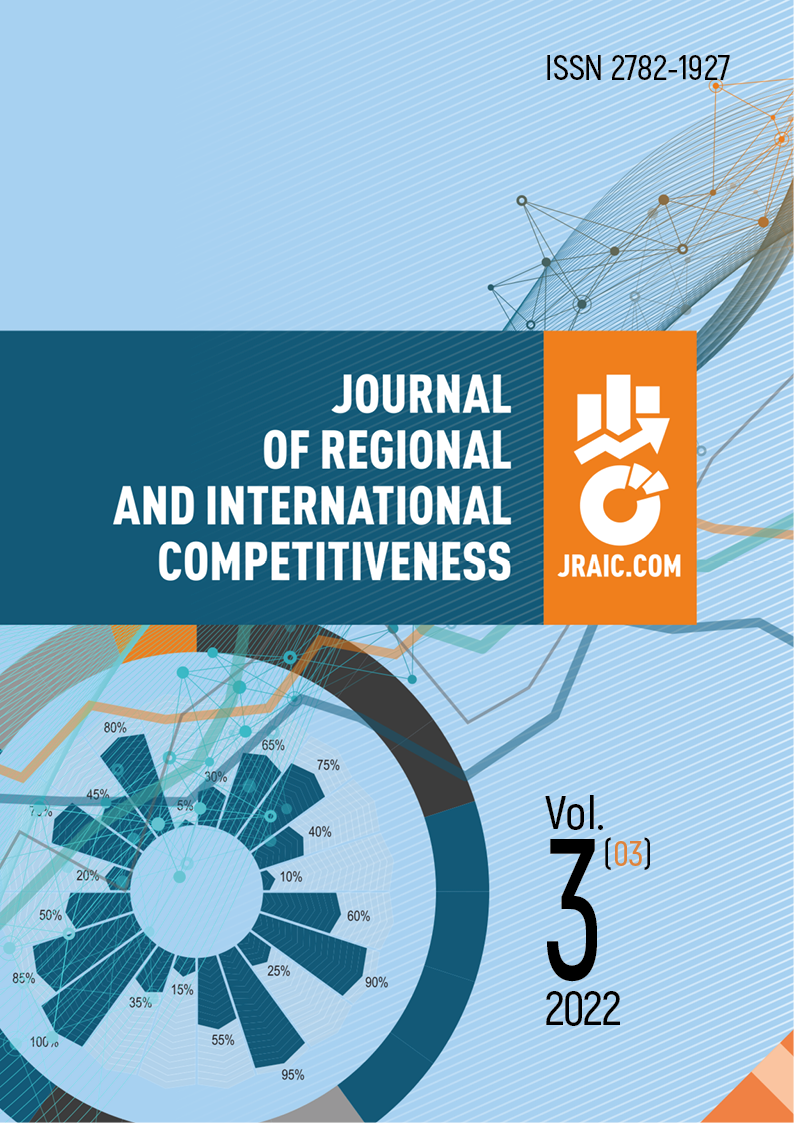Ярославль, Россия
Ярославль, Ярославская область, Россия
The article examines the competition and competitiveness not only as economic categories, but also as proof of their inherent universality in all phenomena of life. During the 40 years of the development of market relations our country had all the advantages and disadvantages of this economic order. We consider the categories of competition and competitiveness themselves, their advantages. Also, we examine their logical connection with other general categories: form and content, quantity and quality, old and new, theoretical and factual, part and whole ones. The challenge is to achieve sustainable development, to improve its effectiveness. And competitiveness is improving of all parts of the enterprise. We designed a system for different departments of the enterprise. It contains all the stages of the product lifecycle from production target through execution, promotion, quality of productions, precision, execution, plan of supply, etc. This study of competition provides a scientific basis for conclusions on the competition: competition of complex objects (enterprises, regions, countries) cannot be expressed by a single indicator even if it is important (product quality, profit, high demand). It is always the complex indicator. The analysts of enterprises should search for economic, technical, organizational, and social reserves not only within the enterprise itself, but also in the external environment, including similar companies abroad. Business analysis should not only search for internal reserves of output growth, but broadly analyze the external environment of the enterprise.
COMPETITION, COMPETITIVE, ENTERPRISE, REGION, COUNTRY, FORM AND CONTENT, COMPETITIVENESS
1. Abramov, V. L. (2004). Intellectual component in the formation of competitive advantages. Marketing, (6), 23-27 (in Russian).
2. Azgaldov, G. G. (1982). Theory and practice of assessing the quality of goods (fundamentals of qualimetry).M.: Ekonomika (in Russian).
3. Azoev, G., & Yakhin, V. E. (2001). Marketing research for medium-sized businesses: market conditions and development prospects. Marketing i marketingovye issledovaniya, (2), 14-20 (in Russian).
4. Akulich, M. (2003) Analysis of the competitiveness of products in the aspect of relations with consumers. Marketing, reglament i sbyt, (6), 34-43 (in Russian).
5. Baumgarten, L. V. (2005). Analysis of methods for determining the competitiveness of an organization and products. Marketing v Rossii i za rubezhom, (4), 72-85 (in Russian).
6. Bely, E. M., & Barashkov, S. V. (2006). Semantic analysis of the concept of competitiveness. Marketing, (4), 15-17 (in Russian)
7. Bogomolova, I. P., & Khokhlov, E. V. (2005). Analysis of the formation of the category of competitiveness as a factor of market superiority of economic objects. Marketing v Rossii i za rubezhom, (1), 112-118 (in Russian).
8. Voronov, A. A. (2003). Modeling the competitiveness of the company’s products. Marketing v Rossii i za rubezhom, (4), 39-46 (in Russian).
9. Hegel (2007). Phenomenology of the spirit. Philosophy of history.M.: Eksmo (in Russian).
10. Golubkov, E. P. (2003) About some concepts of marketing terminology. Marketing v Rossii i za rubezhom, (5), 67-78 (in Russian).
11. Dolinskaya, M. G. (1999). Marketing and competitiveness of industrial products.M.: Ekonomika (in Russian).
12. Zavyalov, P. S. (2001). Marketing in diagrams, figures and tables.M.: Infra-M (in Russian).
13. Zakharchenko, V. I. (1999). Assessment and analysis of the competitiveness of enterprises. Mashinostroitel’, (11), 13-17 (in Russian).
14. Zulkarnaev, U. (2001). Method of calculating the integral competitiveness of industrial, commercial and financial enterprises. Marketing v Rossii i za rubezhom, (4), 17-28 (in Russian).
15. Illustrated Encyclopedic Dictionary. (1995). Nauchnoe izdatel’stvo “Bol’shaya Rossiiskaya enciklopediya, Izdatel’skii dom “Ekonomicheskaya gaseta” (in Russian).
16. Kaplina, O. V., & Zaichenko, D. A. (2005). Assessment of the competitiveness of an enterprise based on a process approach. Marketing, (4), 24-38 (in Russian).
17. Kostrova, A. A., & Zavyalov, F. N. (2016). Development of a subjective approach for a comprehensive analysis of the competitiveness of enterprises in a market economy. Yaroslavl: Filigran’ (in Russian).
18. Magomedov, Sh. (2005). The prestige of the product in the system of assessing their competitiveness, Standarty i kachestvo, (12), 80-81 (in Russian).
19. Marakulin, M. V. (2005). A realistic approach to the formation of integrated assessment systems and methods of managing the competitiveness of a modern company. Menedzhment v Rossii i za rubezhom, (4), 82-86 (in Russian).
20. RSFSR Law of March 22, 1991 N 948-1 “On competition and restriction of monopolistic activity in commodity markets” (in Russian).
21. Porter, M. (2007). Business and Society. Competitiveness and social responsibility. Harvard business Review, (3), 72-86.
22. Porter, M. (2003). Competition.M.: Izdatel’sky dom “Vil’yams” (in Russian).
23. Rezinkina, I. V. (2008). Development of evaluation methods and tools for improving the competitiveness of an industrial enterprise. Extended abstract of Candidate's thesis.M. (in Russian).
24. Sabetskaya, G. R. (2006). Market model of product competitiveness. Marketing, (1), 29-33 (in Russian).
25. Shchegortsov, V. A., & Taran, V. A. (2005). Marketing.M: YUNITI-DANA (in Russian).
26. Ulanova, I. A. (2008). Investments as a source of forming the competitiveness of a processing enterprise. Ekonomichesky analiz, 7(20), 34-39 (in Russian).
27. Fashiev, H. A. (2003). How to measure the competitiveness of an enterprise. Marketing v Rossii i za rubezhom, (4), 53-68 (in Russian).
28. Hamel, G., & Prahalad, K. K. (2002). Competition and the future. Creating the Markets of tomorrow.M: Olimp-biznes (in Russian).
29. Karaeva, F. E. & Zhanataeva, A. Kh. (2008). Profit maximization as one of the factors of competitive struggle of an economic entity. Economic Analysis: Theory and Practice, (22), 48-51 (in Russian)



















